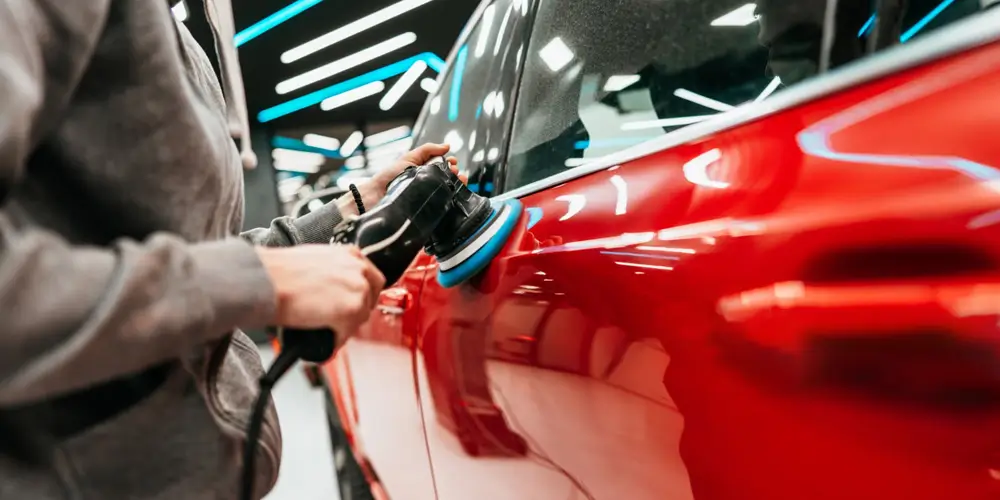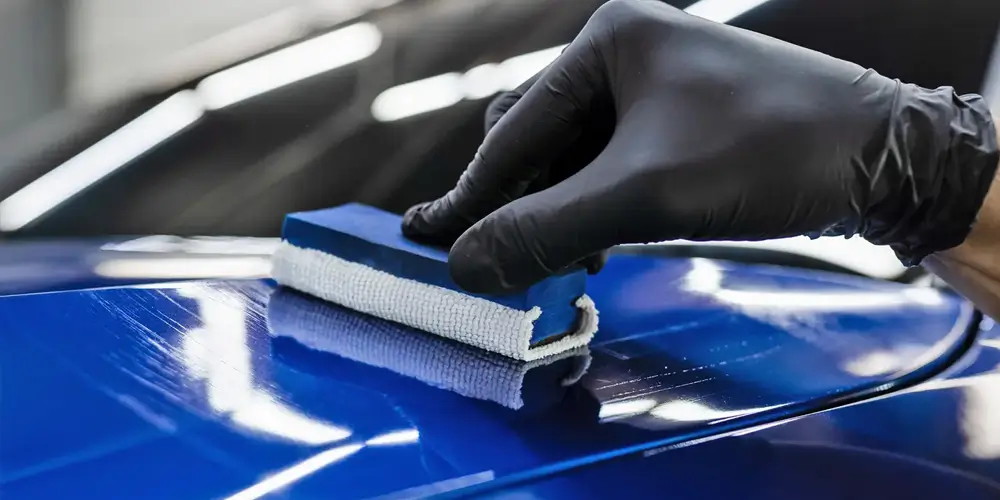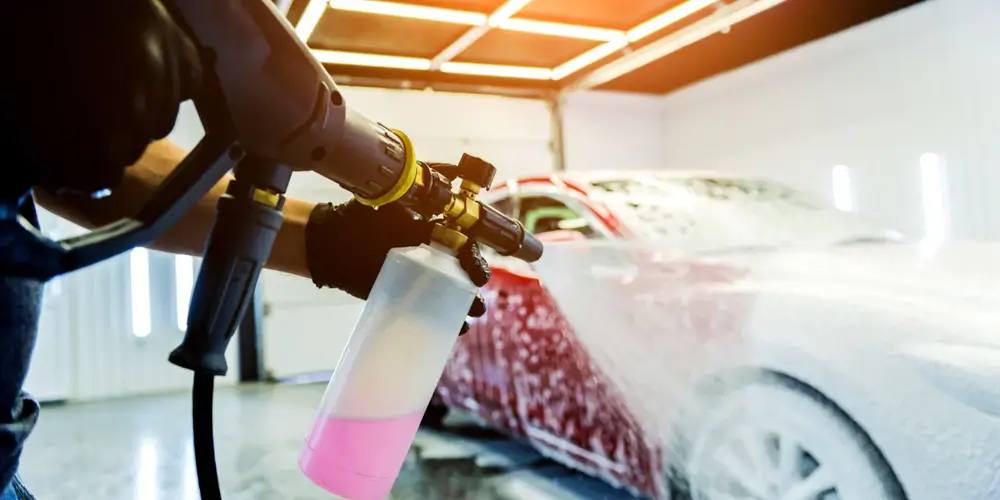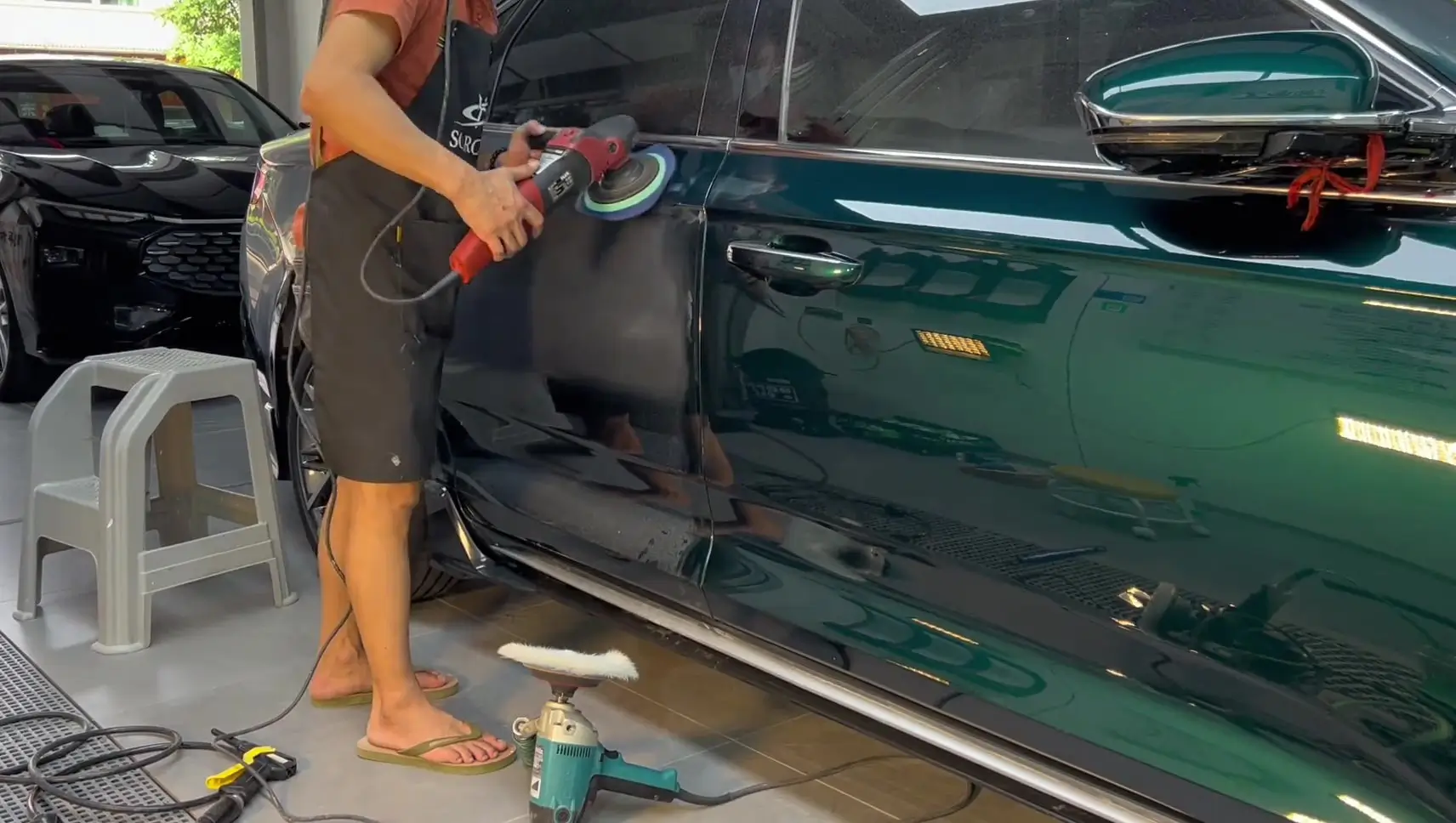What's the difference between buffing compound and polishing compound — and which one should you use?
Understanding the difference between buffing compound and polishing compound is essential for anyone who works with paint correction, car detailing, or surface restoration. Although the two terms are sometimes used interchangeably in casual conversation, they refer to different products and functions in the paint-correction process. This article explains the technical differences, when to use each, practical tips for best results, and why SYBON is the partner to choose when you want quality polishing compounds at competitive prices.
Technical differences: abrasiveness, formulation, and purpose
Buffing compound typically refers to a heavier-cut abrasive paste or compound used to remove more significant surface defects — such as deep swirl marks, oxidized paint, water spots, and light scratches. Buffing compounds contain larger abrasive particles or more aggressive abrasive chemistry designed to abrade away a thin layer of the clear coat or paint to level the surface. The goal of buffing compound is correction: get rid of defects quickly and efficiently.
Polishing compound (often shortened to “polish”) is a finer, less abrasive product formulated to remove fine micro-scratches and haze left behind by heavier cutting steps, then restore optical clarity and gloss. Polishes use smaller abrasive particles or specialized abrasive chemistries that refine the surface rather than remove significant material. Their function is finishing: to maximize shine, clarity, and depth of the paint once major defects have been removed.
Process difference and how they fit together
In a typical paint-correction workflow, both products are used in sequence:
1. Clean the surface thoroughly (wash, decontaminate with clay if needed).
2. Use a buffing compound (fast-cut or heavy-cut compound) with an appropriate cutting pad and machine (rotary or dual action) to remove heavy defects.
3. Follow with a polishing compound (a finishing polish) using a softer foam pad and lower speed to remove the micro-marring from the cutting step and produce a glossy, swirl-free finish.
4. Protect the finished surface with a sealant, wax, or ceramic coating.
In short: buffing compound = heavy correction; polishing compound = refinement and shine.
Tools and pads: matching abrasives to surfaces
Choosing the right pad and machine for each product is as important as choosing the product itself. Aggressive buffing compounds are best paired with wool or firm foam cutting pads and used at moderate to higher machine speeds (depending on the machine). Polishing compounds perform best with soft foam or microfiber finishing pads and lower speeds to avoid reintroducing defects or burning through clear coat.
Common confusion: “buffing” as a verb vs. “buffing compound”
Another source of confusion is terminology. “Buffing” can describe the action of using a rotary or orbital polisher with any abrasive product. Many people say “buffing” and mean “polishing.” For clarity, focus on the product description (cutting vs. finishing) and the step in your workflow rather than the verb.
Practical tips and safety
• Always test on a small, inconspicuous area first to confirm cut level and finish.
• Start with the least aggressive product that still achieves your correction to minimize clear coat removal.
• Keep the pad clean — clogged pads reduce performance and can create swirl marks.
• Maintain consistent pressure and motion; let the pad and compound, not brute force, do the work.
• Wear eye protection and a respirator if you’re working on large areas or using high-productivity setups.
• After polishing, wipe with an isopropyl-alcohol (IPA) blend to remove oils and view the true result before sealing.
When to skip a compound
Not every job requires a buffing compound. If the paint only has light swirl marks or negligible micro-marring, you may skip heavy cutting and go straight to a polishing compound or even a quick detailer to restore gloss. Saving aggressive steps when they’re unnecessary preserves the clear coat and reduces labor.
Why choice of product matters to businesses and detail shops
For professional detailers, collision repair shops, and distributors, having reliable compounds that deliver consistent cut and finish is crucial. A good cutting compound should remove defects predictably without excessive dusting or sling; a good polishing compound should remove hazing quickly and leave deep gloss without oily residues that delay sealing.
SYBON: high-quality polishing and buffing compounds with wholesale support
SYBON is a professional automotive polishing compound manufacturer based in China. We produce a full range of buffing compounds and polishing compounds designed for both professional shops and distributors. SYBON supports low minimum order quantities for wholesale buyers, making it easy for small distributors, local retailers, and workshop owners to stock competitive, high-quality products without the high capital outlay required by some global brands.
Compared to major name brands, SYBON offers:
• Comparable product performance — reliable cutting compounds and high-gloss finishing polishes developed for modern clear coats.
• Better pricing and value — competitive wholesale rates that help distributors and detailers improve margins.
• Flexible order terms and low minimums — ideal for businesses that want to test samples or scale gradually.
• Full range of automotive-care products — from cutting compounds to finishing polishes and surface protection products.
• Responsive after-sales support — sample testing, technical guidance, and timely communication; send us your inquiry through our website and we will respond within 24 hours.
If you want to buy polishing compound wholesale, SYBON is your go-to supplier. Whether you run an auto body shop, a detailing franchise, or a distribution business, SYBON’s combination of product quality, cost-effectiveness, and service will help you win customers and increase profitability. Our products deliver the correction and finish your customers expect, while our pricing helps you compete with bigger brands in your local market.
Conclusion
Knowing what's the difference between buffing compound and polishing compound helps you choose the right product for the job: buffing compounds for aggressive correction, polishing compounds for refining and gloss. For businesses looking to source dependable polishing compounds and buffing compounds at attractive wholesale prices, SYBON provides an effective, affordable solution with professional-grade performance. If you’re an agent, distributor, paint-shop owner, or detailing professional and want to evaluate our products, request samples via our website — we’re eager to work with global partners and will contact you within 24 hours to discuss how SYBON can support your business.
Source of this article:https://www.sybonbest.com
Get to know us through more channels:




